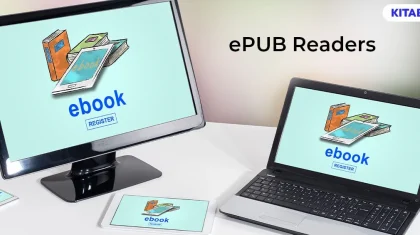
Revolutionize Your Training Program with Video Content- The Ultimate Guide!
Summarize this blog with your favorite AI:
With the advent of digitalization, learning has switched over from traditional tools to more sophisticated video-based methods. These highly interactive video-based learning methods equip learners and teaching professionals with some of the best resources when it comes to disseminating information.
It’s a fact that videos have been proven to deliver a positive impact on the information retention ability of learners. Even data containing infographics has been shown to boost recall ability by as much as 9% compared to plain text.
The following guide provides a walk-through on video-based learning, its various types, and benefits.
But before getting into the technicalities, let’s first get the basics right!
Table of Contents
I. What is a Video Training Content Program?
II. Why Use Videos for Training Programs?
III. Types of Videos for Training Programs
- Animated Videos
- Interactive Videos
- Demonstration Videos
- Presenter/Talking Head Videos
- Whiteboard Videos
What is a Video Training Content Program?
Video training content involves using videos to provide knowledge and enhance skills. Irrespective of whether you’re a student or a working professional, you most likely have watched YouTube tutorials or enrolled in an online course at some point or another. All these have one thing in common; video content.
A report published by Research.com reveals that among a pool of 2000 surveyed companies, 74% of trainers use video training as part of the program.
The convenience of training through video from anywhere, anytime, has made video training content one of the go-to options.
Why use Videos for Training Programs?
According to Simplehow research, short-form visual content is 65% more efficient than conventional PowerPoint Presentations in terms of learning effectiveness. This implies that our brain is wired to process images faster than it can process text.
As such, videos are evergreen, meaning once you create good video content, it can easily be shared with others for a long time. You can also subtitle your video training content to further enhance the effectiveness of your training module.
Video training programs make learning more effective by creating a profound impact on the cognitive function of the brain. Using videos helps viewers retain the information for longer and slowly manifests as a desired positive change.
Furthermore, videos save time, energy, and resources for both employer and employee, coming forward as the preferred choice for most organizations.
Types of Videos for Training Programs
Video training programs are a lot more effective than other formats. Let’s dive into the various kinds used in training to enhance learning experiences.
Animated Videos
Animated videos follow the theme of explaining complex concepts in an easy and fun way. As such, you can create 2D or 3D animations for your module to make it more engaging and interactive.
Tools such as Animaker can be used to create compelling, informative, and exciting videos. It’s worth noting that the whole point of animated videos is to create intrigue in the learners’ minds and keep them hooked.
This type of dynamic approach to information sharing encourages active participation from your audience. This allows trainers to design their modules such that the results are more than just satisfactory.
Interactive Videos
Interactive videos encourage learner participation via components like narratives, quizzes, clickables, and other activities. They offer an immersive interaction experience.
Although they need more effort in the creation process, they are an investment that is almost sure to bring in a high ROI in the future.
Demonstration Videos
These how-to videos, guide viewers enabling them to perform specific tasks. Demonstration videos are mainly used in the tech, manufacturing, and service industries. They disseminate information by demonstrating the task on the video, effectively. These videos are incredibly helpful and promote self-paced learning.
Presenter/Talking Head Videos
This is one of the most common forms of video content you see online. Here, a presenter talks in front of the camera and addresses the audience. For this, it’s better to hire a professional to assist you.
These are usually more expensive than other forms of videos. However, you can also use AI tools and a virtual presenter to make the process easier.
Whiteboard Videos
In whiteboard videos, the presenter uses a whiteboard(real or animated) to explain concepts and ideas. These videos are mainly used in educational institutions, marketing firms, and training settings. These videos give you a classroom feel and can be quite fascinating to watch.
Benefits of Video-Based Training
Now that we have laid out the different types of videos you can use in your training program, let’s discover why using videos for learning is so beneficial.
Flexibility
The most understated benefit of videos is that they can be customized as per the creator’s will. You can use video training content to recruit and train your employees. They can also be used in onboarding, including training and business tutorials, as video training content can be quite exciting and convenient to watch.
Video-based modules can also help newbies and members learn at their own pace. You can use video content for launching products, recruiting new employees and boosting customer support skills as well.
Cost-Effectiveness
Video training programs are highly cost-efficient, with one of the primary benefits being money saved in travel expenditure. Video content is evergreen; once recorded, they can be used as often and for as long as one wishes. Therefore, in the long run, this will only save you more expenses.
Better Information Retention
The human brain is fickle, and it’s only natural that people will forget most of the training after a week. Thus, providing them with recorded lectures can help them retain information a lot better and for a lot longer. According to one report, employees retain 95% of the training knowledge when they consume it in visual form compared to 10% in text format.
Additionally, customers love to learn about products when the information is in the form of videos. Some studies show that people retain up to 80% of information when learning visually and only 20% when learning through text.
Accessibility
Accessibility is one of video content’s greatest strengths. Viewers can learn at their own pace while repeating the videos as often as they like. This is because in-person training is costly, especially when there are many employees.
Video training is ideal for sharing with your remote employees, as they can access your content at their own pace. One can also add subtitles to increase the accessibility of the videos.
Boosts Productivity
Conventional teaching methods are time-consuming, not to mention either employees or trainers might need to travel to a specific venue. Such hassles are legitimate hurdles to productivity, wasting valuable human resources and time.
Video training modules are the best alternative to in-person training sessions. Employees can watch training modules from anywhere, and in turn, save valuable time and boost productivity.
Final Thoughts
To sum up, video training programs offer a cost-efficient and engaging way of learning. While they may not entirely replace conventional methods, they can be supplementary to traditional learning methods.
With an intuitive interface & numerous multimedia options to choose from, a cloud-based digital textbook platform like KITABOO can help you easily create and distribute video-based modules to your employees.
To know more, write to us at contact@kitaboo.com
Also check:
Discover how a mobile-first training platform can help your organization.
KITABOO is a cloud-based platform to create, deliver & track mobile-first interactive training content.



